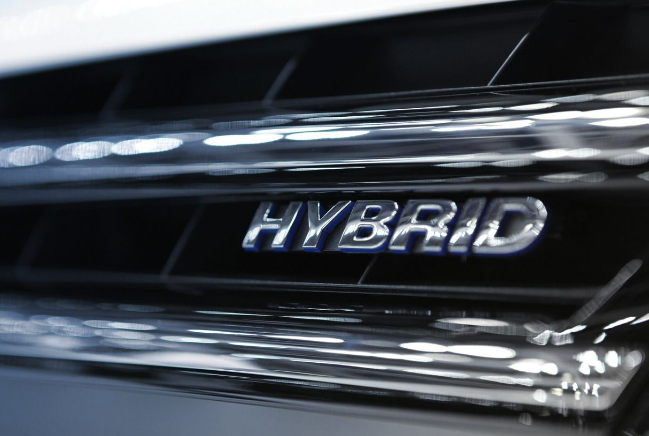
As the automotive industry accelerates towards a greener future, hybrids are being marketed as a middle ground that blends the benefits of traditional petrol engines and electric vehicles. However, this so-called middle ground is a deliberately crafted detour by some OEMs that delays our transition to sustainable mobility. Therefore, it is important to critically examine whether this truly is a step in the right direction or a compromise that fails to deliver on its promise.In an era where consumers are increasingly conscious of the environmental impact of their mobility choices, it is essential to scrutinise whether hybrids genuinely align with our green aspirations or merely prolong our dependence on fossil fuels.
Studies indicate that hybrids do not significantly reduce emissions compared to traditional fossil fuel vehicles. In fact, data shows that hybrids trail behind in fuel efficiency and emissions reduction, failing to deliver on their environmental promises. While they may cost less upfront, they do little to mitigate the climate crisis we face.
Diesel outscores hybrids
Diesel has been the favourite whipping boy of policymakers across the world since the Volkswagen mileage scam hit the headlines nearly a decade ago. However, when compared to hybrids, diesel scores on mileage when it comes to highway driving. In terms of power and performance too, it is way superior.
For example, the Hyundai Santa Fe Diesel AWD can travel 100 km on just 6 liters, providing a range of approximately 1116 km, whereas the hybrid version consumes 6.9 liters for the same distance, giving a range of 971 km in full tank. This raises the question: are hybrids truly a step forward, or merely a distraction from more effective solutions like modern diesel engines that have significantly improved emissions?
There is a school of thought that diesel has been needlessly singled out as the villain of the piece at a time when its emissions are lower keeping in line with stiffer norms. In India, the shift to Bharat Stage VI norms from April 2020 saw fewer particulates in diesel which only drives home the fact that it can continue to be a safe fuel from the viewpoint of emissions.
Industry observers maintain that diesel vehicles have been unfairly maligned in favour of hybrids. Modern diesel engines have significantly lower emissions than their predecessors and can compete with hybrids in terms of fuel economy.
Hybrids emit more
Real-world tests reveal that hybrids emit far more emissions than manufacturers claim. A striking study in Europe found that these vehicles produced 3.5x more carbon dioxide than the laboratory values reported by manufacturers, undermining their supposed environmental benefits. Another study by a leading UK non-profit, found that the yearly cost of fueling hybrids was nearly double what manufacturers claimed. In practice, they are not being charged and driven in electric mode as frequently as expected. In European countries, it is found that most drivers rely on gasoline while driving hybrids and less on batteries. Charging takes comparatively more time than fueling up the petrol. This façade (from the grid) appeared to be used only to get the incentives.
In fact, one laboratory test reveals hybrids were found to emit an average of 40 grams of CO2 per kilometer. However, real-world testing revealed that these emissions were significantly higher, averaging 139 grams per kilometer. This puts hybrids at only 23% lower emissions than traditional petrol and diesel vehicles, which emit around 180 grams per kilometer. In comparison to electric vehicles which are emission free.
As one industry observer puts it, “The façade of hybrids being green is a ruse; they are primarily fossil fuel vehicles dressed in electric clothing. When it comes to achieving zero emissions, only full electric vehicles can deliver.”
The results from European testing indicate that hybrids behave much more like fossil fuel vehicles than electric ones. The standardised WLTP (Worldwide Harmonised Light Vehicles Test Procedure) tests do not accurately reflect real-world performance. Consequently, the actual fuel consumption for hybrids is significantly higher, with European drivers facing an average annual fuel cost that is nearly double the manufacturers’ claims—about A$960 more each year. Ultimately, this suggests that hybrids are primarily used as fossil fuel vehicles rather than electric ones.
According to a study by Alexandria Engineering Journal, while hybrids show reduction in emissions compared to ICE vehicles, they still fall short of EVs, which exhibit CO and CO2 emissions as low as 20%.
Flogging a dying horse
The push for hybrids seems less about environmental benefit and more about maintaining the status quo for manufacturers unprepared for a fully electric and zero-emission future. “Every hybrid auto maker is also planning to launch EVs. Since they are not ready with their electric offerings yet, they are suddenly screaming from the rooftops about how hybrids is an alternative despite it being an old, polluting technology with limited success. The Government should not yield to their demands for any additional fiscal sops using public funding,” adds another industry observer.
China’s aggressive push for electric vehicles illustrates the potential of EVs to address pressing environmental issues and foster economic recovery. By prioritising EV technology, China has been able to curb severe air pollution, reduce reliance on imported oil, and stimulate growth following the 2008 financial crisis. The country recognised early on that the future of transportation lies in EVs, showcasing a clear vision for sustainable mobility for the rest of the world to follow.
Thus, it is important for governments and consumers to consider the long-term implications of their mobility choices and singularly accelerate promotion and adoption of only green, zero-emission technologies like electric vehicles that can make mobility fully sustainable.


